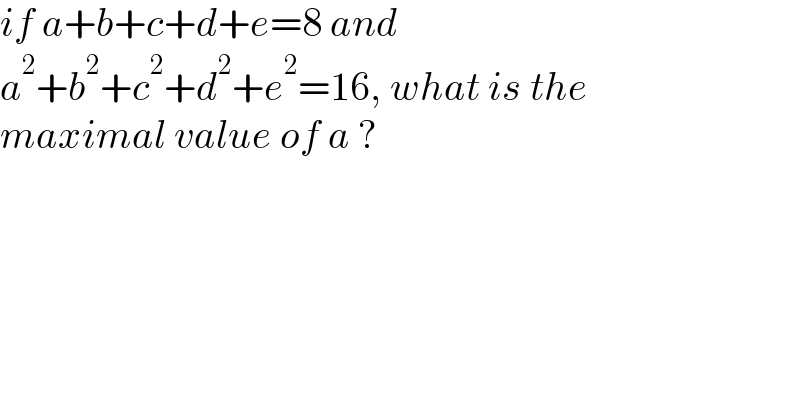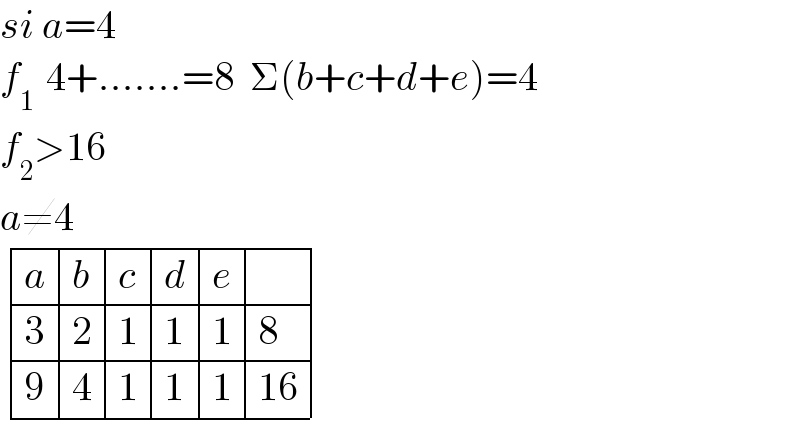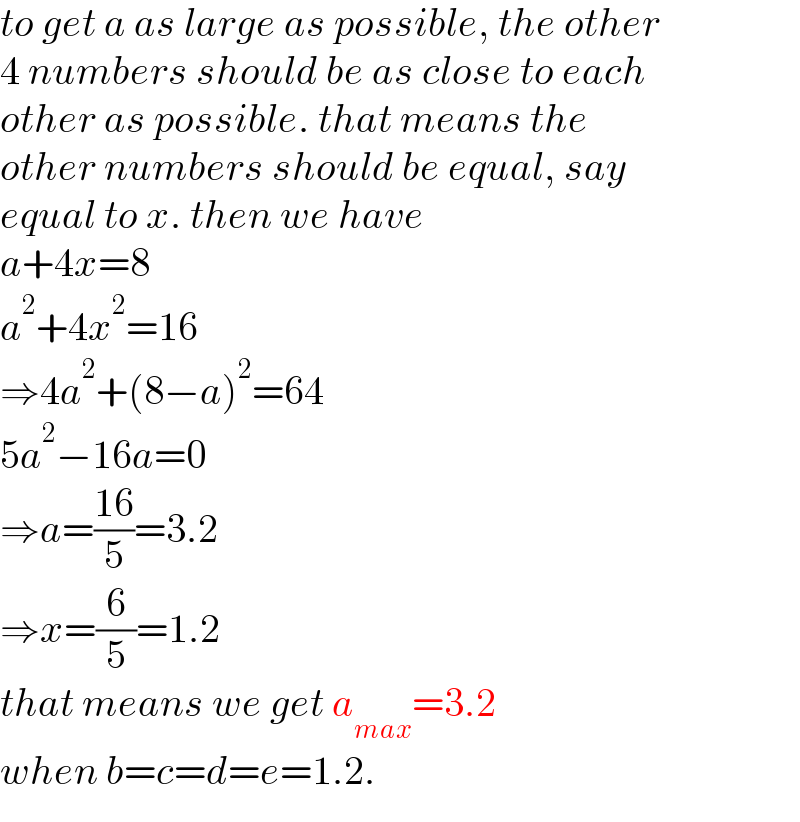Question Number 180641 by mr W last updated on 14/Nov/22

Answered by Emrice last updated on 14/Nov/22

Commented by Rasheed.Sindhi last updated on 15/Nov/22

Commented by mr W last updated on 15/Nov/22

Commented by Rasheed.Sindhi last updated on 15/Nov/22

Answered by a.lgnaoui last updated on 15/Nov/22

Answered by manxsol last updated on 15/Nov/22

Commented by manxsol last updated on 15/Nov/22

Commented by mr W last updated on 15/Nov/22

Answered by mr W last updated on 15/Nov/22

Commented by manxsol last updated on 15/Nov/22
Thanks Mr.W. I am learn.
Commented by mr W last updated on 15/Nov/22
![an other method (little thinking, just applying formula) a=8−(b+c+d+e) (8−b−c−d−e)^2 +b^2 +c^2 +d^2 +e^2 −16=0 Φ=8−(b+c+d+e)+λ[(8−b−c−d−e)^2 +b^2 +c^2 +d^2 +e^2 −16] (∂Φ/∂b)=−1+λ[−2(8−b−c−d−e)+2b]=0 ⇒b=(1/(2λ))+8−(b+c+d+e) similarly ⇒c=(1/(2λ))+8−(b+c+d+e) ⇒d=(1/(2λ))+8−(b+c+d+e) ⇒e=(1/(2λ))+8−(b+c+d+e) ⇒b=c=d=e=x, say (∂Φ/∂λ)=(8−b−c−d−e)^2 +b^2 +c^2 +d^2 +e^2 −16=0 ⇒(8−4x)^2 +4x^2 −16=0 5x^2 −16x+12=0 ⇒x=((8±2)/5)=2 or (6/5) ⇒a=0 (min) or ((16)/5) (max)](https://www.tinkutara.com/question/Q180697.png)
Commented by mr W last updated on 16/Nov/22

Commented by manolex last updated on 16/Nov/22

Commented by mr W last updated on 16/Nov/22
https://www.wikihow.com/Use-Lagrange-Multipliers
